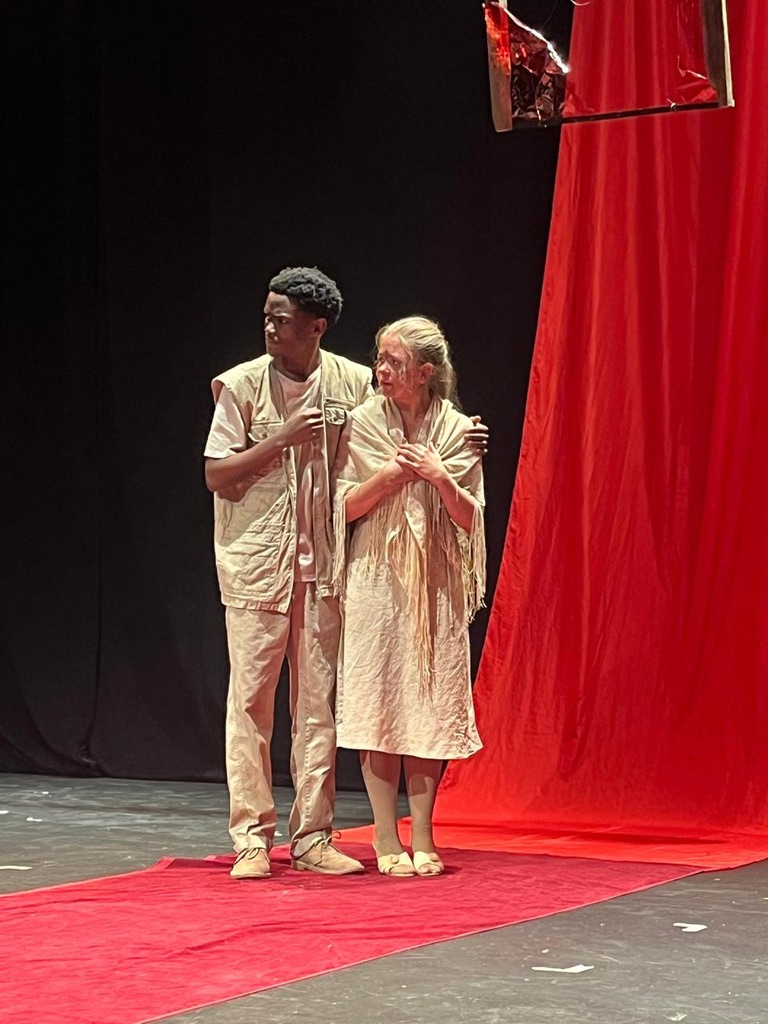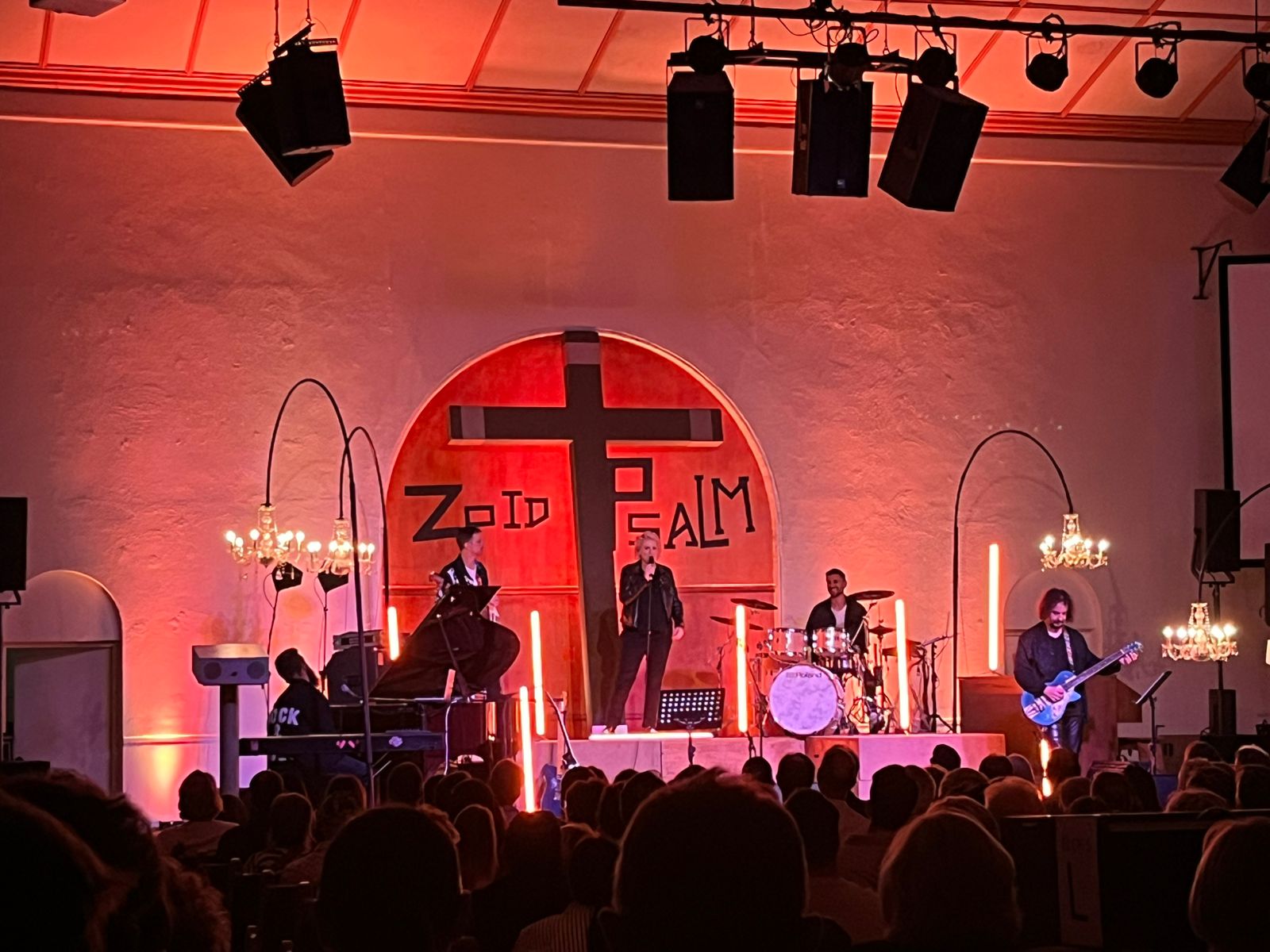By Savannah Farris

Plays entertain and transport audiences from one reality to an entirely new one, but few people actually know what goes on behind the scenes. The Second Coming was recently performed at the Adam Small Theatre on 3 and 4 October. As a religious satire, it encouraged the audience to reflect on human nature, reminding them that when looking for someone to blame, it’s most often the finger needs to be pointed at them.
Matt Gray, one of the directors and actors of The Second Coming, shed some light on how they produced their surreal performance. Matt and the other six students in his group chose to write and perform an original script. The play’s facilitator, André Gerber, supervised the process as well as the group members, Kimi de Beer, Lea Steenkamp, Taylor Ackermann, Mateo Komlosy, Lutho Ndyalvane, Kgahlisho Matloga and Matt Gray.
Having settled upon religious satire as their genre, Gray admitted laughingly that “the whole thing started with a delusional pope suffering from erectile dysfunction, as well as his ridiculous belief that the world owes him something because of his disability. That’s really where it began.”

The play is set in a post-apocalyptic world, with Pope Innocence (Mateo Komlosy) positioning himself as an absolute authority over the last seven people on earth, and extinguishing any spark of doubt or challenge against him. However, when Rue (Lea Steenkamp) arrives, Pope Innocence’s lust overrides his own decrees, warmly welcoming her in. Rue sows seeds of doubt, pitting characters against each other, leading to conflict and the eventual demise of most of the characters. Only two survive. One of which is Rue, who is revealed as a demoness.
At first glance, one might assume Rue as the villain but, as Gray explains, “Rue doesn’t do much apart from say things,” which fans the already existing flames of doubt and distrust. The play comments on how it is not evil that destroys humanity, but rather humanity itself, with only a catalyst needed to trigger the chain of events.
This play was exceptionally written, directed, and performed – so much so that it makes it hard to believe seven 20-something year old drama students were the masterminds behind the piece. Every detail, from script and set to costumes and acting, was carefully crafted, resulting in a compelling performance. For them it may have been one of many other projects to be graded on, a part of their degree, but for the audience, it was a complete experience. Any show produced by the drama students is highly recommended – each one well worth the watch.



